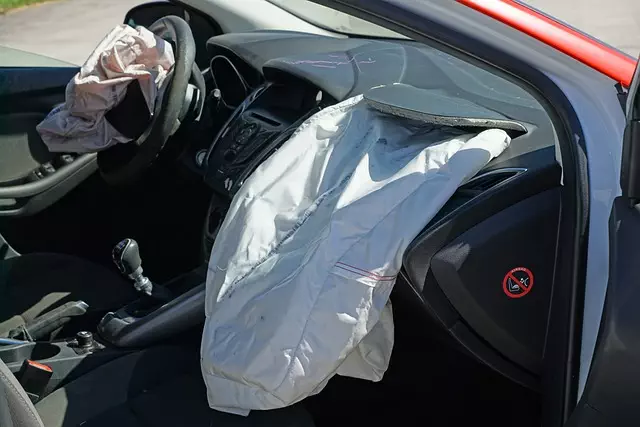Comprehensive car insurance offers enhanced protection beyond standard policies, covering a wide range of risks including natural disasters, theft, vandalism, and animal-related damages. It provides peace of mind by shielding policyholders from unexpected expenses like medical bills, legal fees, rental cars, and towing services. This 'all-risk' coverage goes beyond accidents, protecting against events such as civil unrest and falling objects. Understanding what comprehensive car insurance covers is vital for making informed decisions, balancing thoroughness with affordability, and ensuring personalized protection based on individual needs and vehicle value.
Local comprehensive insurance plans offer robust protection for your vehicle, providing peace of mind on the road. This article delves into what comprehensive car insurance covers, exploring its key components and benefits. We’ll break down common scenarios, exclusions, and cost comparisons to help you choose the right plan. Additionally, we provide a step-by-step guide to filing claims and discuss the latest trends in this essential coverage. Understanding what does comprehensive car insurance cover is crucial for making informed decisions.
Understanding Comprehensive Car Insurance: A Definition

Comprehensive car insurance is a type of vehicle coverage that goes beyond the standard liability policies. It offers protection against a wide range of potential risks and damages, providing peace of mind for drivers. When we talk about what does comprehensive car insurance cover, it includes various scenarios that extend beyond accidents and collisions. This policy typically covers damage caused by natural disasters like floods, earthquakes, or severe storms, as well as incidents such as fire, theft, vandalism, and even animal-related damages.
In addition to these events, comprehensive insurance also covers certain types of medical expenses if you or your passengers are injured in an accident, regardless of fault. It can also reimburse policyholders for loss of personal belongings left in the vehicle. This type of insurance is often seen as a complete protection plan, ensuring that drivers are shielded from numerous unforeseen circumstances that could impact their vehicles.
Key Components of a Comprehensive Car Insurance Policy

Comprehensive car insurance, often overlooked yet immensely valuable, offers protection beyond the standard coverage provided by liability and collision policies. At its core, it encompasses several key components designed to safeguard against a wide range of potential risks. When you wonder, what does comprehensive car insurance cover?, these are the essentials: first and foremost, it includes coverage for damage to your vehicle resulting from events other than accidents, such as natural disasters (e.g., floods, fires), vandalism, or theft. This extends to both the structural integrity of your car and its mechanical components.
Moreover, comprehensive insurance policies typically include reimbursement for certain additional expenses not directly tied to vehicle repair or replacement. These can include costs associated with legal fees, rental cars while yours is being repaired, and even towing services in case your vehicle breaks down. Such policies aim to provide peace of mind by ensuring that unexpected events don’t translate into financial burdens, offering a safety net for both your asset (your car) and your budget.
What Situations are Covered Under Comprehensive?

Comprehensive car insurance, often referred to as ‘all-risk’ cover, provides protection against a wide range of unforeseen events and perils that could damage or affect your vehicle. This type of policy goes beyond the basic liability coverage by including several specific scenarios. When you have comprehensive insurance, your vehicle is protected from natural disasters like floods, earthquakes, or extreme weather conditions, which can cause significant damage.
Additionally, it covers damage resulting from accidents involving other vehicles, including collisions, road debris, and even animal-related incidents. Comprehensive plans also take care of specific issues such as theft, vandalism, and damage caused by civil unrest. This means if your car is stolen, vandalized, or suffers any other type of intentional damage, the costs associated with repair or replacement are typically covered, providing peace of mind for policyholders.
Exclusions: What's Not Included in Comprehensive Coverage

Comprehensive car insurance is designed to protect policyholders from a wide range of financial losses, but it’s important to understand what’s covered and what isn’t. While comprehensive coverage provides peace of mind by safeguarding against many unexpected events, there are still certain exclusions. These exclusions detail what’s not included in the policy, ensuring clear understanding of limitations.
Typical exclusions for comprehensive car insurance include damage caused by natural disasters like floods or earthquakes, as well as wear and tear, normal maintenance, and willful acts or vandalism. It’s crucial to remember that comprehensiveness applies to specific perils listed on the policy. Policyholders should carefully review their policies to know exactly what events are excluded from coverage, allowing them to make informed decisions and consider additional protections if needed.
Comparing Costs: Comprehensive vs. Other Types of Car Insurance

When considering your options for car insurance, comparing costs and coverage is paramount. It’s essential to understand that comprehensive insurance offers a broader protection spectrum than standard policies. While it doesn’t cover all potential incidents, as it does include protection against events like theft, vandalism, natural disasters, and accidental damage. This makes it a robust choice for drivers seeking peace of mind.
On the other hand, comparing comprehensive insurance costs with other types reveals varying price points. Factors influencing these differences include your vehicle’s make and model, driving history, location, and chosen deductibles. It’s crucial to balance coverage depth with affordability. By evaluating what each policy entails, you can make an informed decision, ensuring you’re not overpaying for aspects already covered by comprehensive insurance’s broad protection.
Choosing the Right Comprehensive Plan for Your Needs

When selecting a comprehensive car insurance plan, understanding what is covered is paramount. Comprehensive car insurance goes beyond basic liability, offering protection against a wide range of unforeseen events. This includes damage from accidents, theft, vandalism, natural disasters like floods or earthquakes, and even falling objects. It also typically covers the cost of repairs or replacement of your vehicle if it’s deemed a total loss.
The right plan for you depends on your individual needs and risk profile. Consider factors such as your driving history, vehicle value, where you park your car (e.g., on the street or in a garage), and your budget. Some policies may offer add-ons for specific concerns like roadside assistance, rental car coverage during repairs, or protection against mechanical failures. Carefully review policy details to ensure you have adequate coverage that aligns with your unique circumstances.
Making Claims: A Step-by-Step Guide to File a Comprehensive Claim

When it comes to comprehensive car insurance, understanding the claims process is vital. Filing a claim for your covered losses is a straightforward procedure, designed to help you navigate through what can often be a challenging time. Here’s a step-by-step guide on how to file a comprehensive car insurance claim:
1. Assess the Damage: The first step is to examine your vehicle and document the damage caused by events covered under your policy, like accidents or natural disasters. Take photos of the affected areas from various angles for future reference.
2. Notify Your Insurance Provider: Contact your insurance company as soon as possible after the incident. Provide them with essential details such as your policy number, claim type (comprehensive), and a brief description of what happened.
3. Provide Detailed Information: Gather and present all necessary information to support your claim. This includes police reports (if applicable), repair estimates from trusted mechanics, and any other documentation related to the damage or replacement costs.
4. Choose a Repair Facility: Your insurance company may have a network of preferred repair centers, but you’re not limited to these. Select a reputable facility that understands your coverage and can provide quality repairs while adhering to your policy’s guidelines.
5. Wait for Processing: After submitting your claim, the insurance company will review it and reach out with an update. The processing time varies based on various factors, so be patient during this phase.
Staying Informed: Updates and Trends in Comprehensive Car Insurance

Staying up-to-date with the latest trends in insurance is crucial for making informed decisions regarding your vehicle’s protection. Comprehensive car insurance, a vital component of many drivers’ coverage, offers a wide range of benefits beyond what a typical liability policy provides. Understanding what comprehensive car insurance covers can help you navigate this complex landscape and ensure you’re adequately protected. This type of policy typically includes coverage for damages caused by events like natural disasters, theft, vandalism, and even accidents involving uninsured or underinsured drivers.
Regularly reviewing updates in the industry is essential because insurance companies frequently adjust their policies and offerings to keep up with changing risks and customer needs. With the ever-evolving automotive technology and an increasing number of road hazards, what comprehensive car insurance covers can vary from provider to provider. By staying informed, drivers can make sure they have the right coverage for their specific circumstances, ensuring peace of mind on the road.
